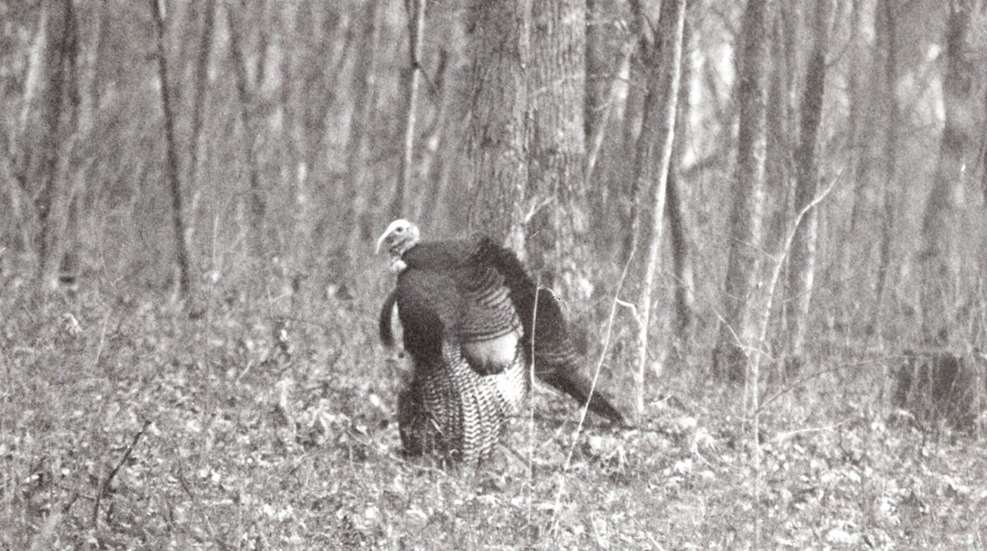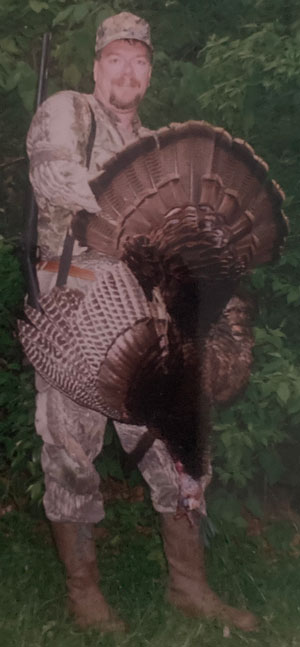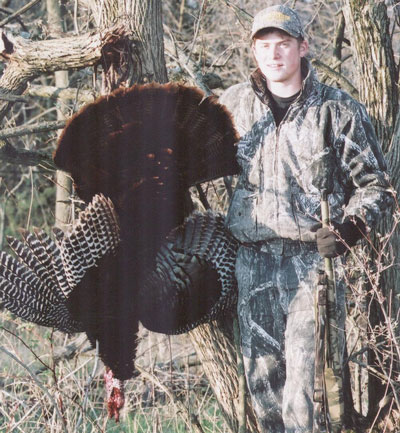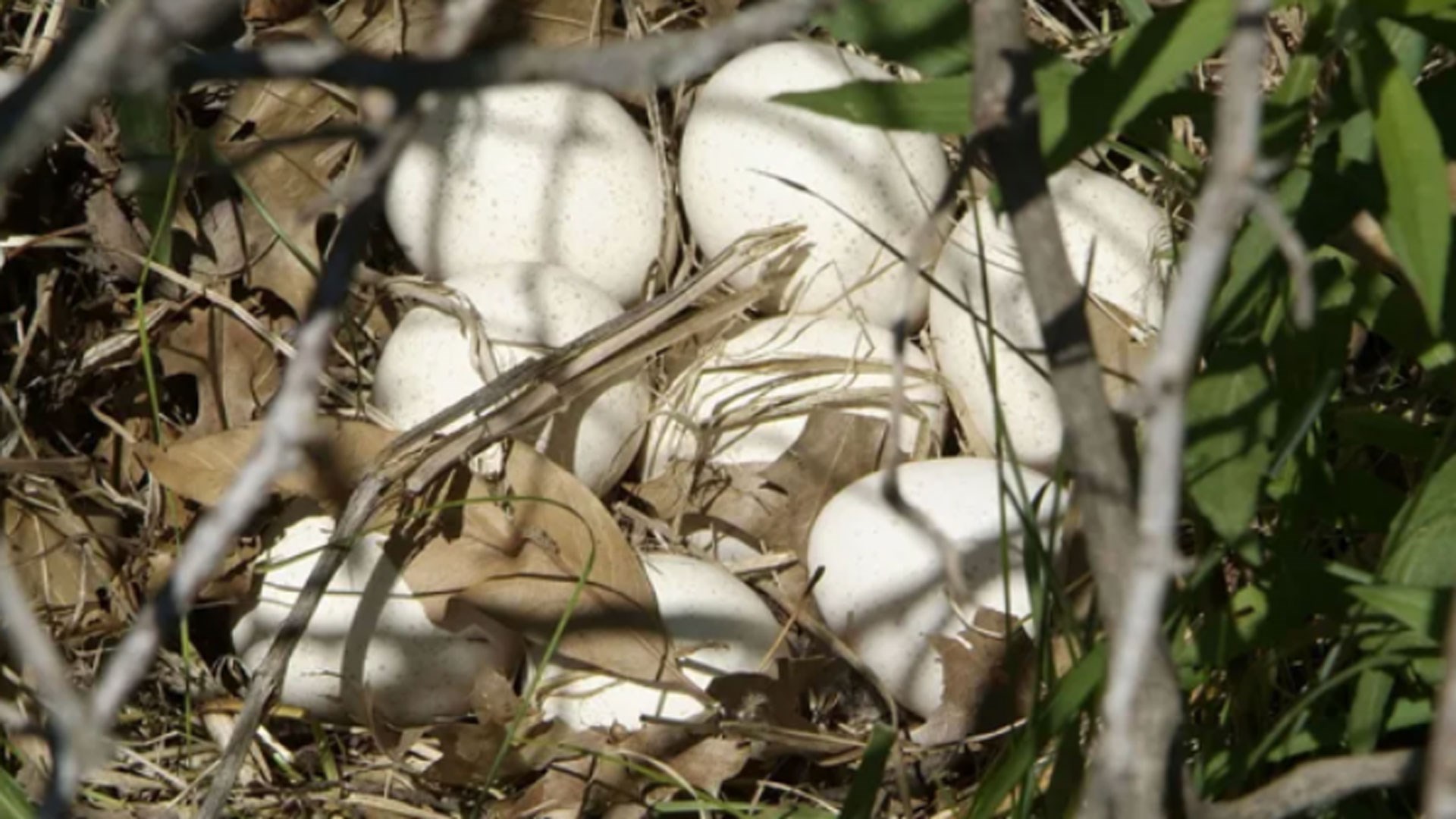
Dawn crept over the horizon like a sedated snail. I cannot believe how long it can take the sun to come up when you’re waiting on it. Nights seem much longer during turkey season. It is almost like God forgot to set the alarm. Turkey hunters long to hear that first gobble of the day. So we sit in the dark and wait.
On this particular morning I was sitting on a ridge in Pike County, Missouri. My wait was eased by the knowledge that I shared this ridge with at least two—maybe more—mature gobblers. At dawn the previous day I was sitting in this same spot, charting gobbler roosts and patterning their morning movements. I was confident that the early morning air would soon fill with a cacophony of gobbling.
I sat there until 8:30AM without hearing a turkey sound of any kind. By this time the day before, I had heard two hundred gobbles. Had these birds all died overnight? Had they all moved to another county? Had aliens beamed them all up for dinner? Many hunters could and would believe some or all of these scenarios. Because of the thousands of hours that I have been fortunate enough to spend playing with these big birds, however, I was confident I knew why they were quiet and how to find them.
This is the first cycle to discuss today; the gobbling cycle. How many times have you been in a spot where the gobblers got hoarse from gobblin'? You then show up there the next morning and the air is silent. Not a sound. You are disgusted and confused so you leave early. You return in a couple of days, just to see and find every bird in the world is there and gobbling. There are very logical reasons for this fluctuation in gobbling activity.
Let's look at why male turkeys gobble. The gobble is the only mating call that we know turkeys make. The hen yelps, purrs, putts and clucks that are made during mating time are also made at all other times of the year. When the days grow longer, female turkeys feel the urge to breed and reproduce.

Because of this, toms too feel hormonal changes. His problem is, "How do I find the hens?" The solution is simple. He makes the loudest possible sound he can make so the hens know where he is, so they can come to him. He amplifies this process by gobbling from an elevated position—his roost—for greater range. The process is he gobbles, and the hens that are in season seek him out.
Now the cycle begins. The tom spends the night roosting alone. When he wakes up, he has the urge to mate. This causes him to gobble to attract hens. He may begin gobbling from his roost fairly early, and continue to gobble even after he flies down. He may have a hen or two arrive at his roost before he comes down. This probably pumps him up even more, so he continues to gobble on the ground.
As he spends the morning collecting and servicing hens, they will likely flock together throughout the day, feeding. The male may stay with the hens, especially if one or more of them mated with, or showed signs of mating with him. If they spend the day together, they are also likely to roost together that night. I know you have been faced with this problem. It hurts when you find your gobbler roosting with hens.
When the sun comes up and a gobbler is in the same tree, or even the same area as several hens, his reason for gobbling no longer exists. He has no need to call-in females because they are already there. Therefore, a tom that was extremely vocal yesterday may have a case of lockjaw today. Being aware of the possibility of this gobbling cycle can save you a lot of frustration. But do not think this bird cannot be called and taken because he is with hens.
Usually, by mid-morning, the hen's interest in the gobbler has dwindled. She is more interested in feeding or getting back to her nest than being with the tom. She will tire of his company and leave him. Now he may not have had his fill of the mating game yet. Because his urge lingers, he begins to gobble to try to attract other possible dates. He may go to his favorite "strut zone" or breeding area and set-up his display, which may include strutting, drumming, spitting and gobbling. I have consistently taken adult, mature gobblers after 11:00AM. Between about 10:00AM and the end of legal shooting hours, regardless of that time, is when gobblers become most vulnerable to calling.
This leads us to a much broader and much more complex cycle that wild turkeys go through each spring. My friend and turkey hunting/guiding buddy, Ray Eye, was the first to help me recognize these cycles. Knowing that these cycles exist and how the birds respond to these cycles will help you make successful decisions about calling techniques within each phase of the cycle.
Let’s look at the phases in order. The first phase in the cycle begins before the hens come into season. This can be important if you have an early first-season hunting opportunity. Missouri has an early season that may contain a portion of this phase. It is in these early days of the mating game that both males and females are involved in the "pecking order" process. For birds, the term "pecking order" is accurate both figuratively and literally.
During this time, the hen flock is going through the process establishing dominance. This will determine who the "Boss Hen" is and how the subsequent hierarchy will evolve. A good point to make now is the importance of the "Boss Hen". She will not only decide which hens will mate, but probably to which toms. When turkeys gather in flocks, regardless of the number of birds, there is a hen that makes and enforces the rules of behavior.
The toms are, during this same period, going through similar dominance determinations. After this chain of command has been decided, territories will begin to become established. Although turkeys place less significance on territories than, for instance, deer, they still exist and can be important to the hunter. Knowing where a gobbler may be headed to do his mating display can come in handy. Already being where he wants to go puts you at a distinct advantage.
Calling during this phase can be tricky. Even though the hens may not be ready for breeding, the toms do not necessarily know that. Toms are waiting for hens to become receptive. Sometimes hen calls in this early season will work, especially on two-year-old gobblers who are looking for their first date. More often though, because finding their place in the dominance scheme is so crucial, gobblers will respond quicker to gobbler calls.
This brings me to my best, most important piece of advice for calling the wild turkey. "DO NOT GOBBLE!" Never, ever, no matter what! Do not gobble! This is about the most dangerous thing you can do in the turkey woods. There are much safer and just as effective calls to use to imitate male’s turkeys. Using a box to reproduce the yelps of immature males works well. My favorite, most deadly turkey sound of all is the cluck of an adult gobbler. This is the single most effective call I use, regardless of which phase the birds are in.

The next phase occurs when the hens share the company of toms, but are not yet ready to breed. This really gets the gobblers frustrated. They are virtually "glued" to the females, waiting for them to come into season. Calling too can be frustrating at this time. Hen calls work well now because there is a good chance the "Boss Hen" will come to hen calls to challenge a female intruder. If she does respond, chances are the gobbler will follow her in.
The encouraging part about this second phase is that it usually does not last very long. It probably will not take but a very few days for the hens to accept the toms. Sometimes the turkey population is so dense in a given area that you will not even recognize this phase.
Phase three of the wild turkey's mating cycle is the longest and easiest to identify. The main reason for this is that most spring turkey seasons fall during this phase. At this time breeding is active and hens will build and begin to fill their nests. Hens respond quickly to gobbles during this phase. The good thing for the hunter is that the hens are focused. They will mate quickly and return to their nests even quicker, so the eggs do not have a chance to cool. Usually by mid-morning the hens that are in season have been serviced and are back on their nests. This leaves many receptive toms for the hunter to play with.

It is during this phase when I have the most fun calling and fooling big gobblers. I usually begin my round late in the morning, after 10:00AM. A gobbler will hit a strut zone after all the hens have left him, to strut and display for immature birds or even sub-dominant adult toms. I like to set-up 150 to 200-yards from the gobbler. I begin my calling sequence with the loud, frantic cutting calls of the "Boss Hen". I use a 4-Play Rafter Box Call for this. The gobbler will usually respond vocally.
Once I am sure he has answered my hen calls, I shut up. His instinct tells him to stay put. Under natural circumstances, the hen that he has just made contact with will come to him. That is the way nature has it designed. So he stays in his spot, gobbling occasionally and strutting. After a while he may begin to wonder why his new date has not yet arrived, but he still sees no need to "chase" her. He stays put.
After many minutes and at least a few gobbles on his part, I call again. I rotate my 4-Play to expose 2 different sounding boards. But this time I do not make the call of the hen. This time I take the box call and imitate the yelps of an immature tom. This forces a change of instinct in my big boy. Now instead of instinctively waiting on the hen, he believes a young jake has moved-in on his newly found love interest. Now his instinct does not tell him to stay put, but rather to go defend his princess and his breeding territory.
Quite often when a gobbler comes in looking for a fight instead of a date, he will move slowly and check things out well. When he tips his hand and lets me know he is close, I will give him a couple of gobbler clucks from my box call. This usually puts him in a frenzy, puts him in a snit and puts him in my freezer.
The fourth and final phase of the cycle is one that happens late in the spring. At this time the hens have finished breeding and are tending full nests. The males are still filled with the urge to mate and usually respond to just about any call. This does not necessarily make hunting easier. Even though a gobbler may be easier to work during this phase, the foliage and undergrowth of the forest floor can hamper vision tremendously. Late season pasture hunts are what I recommend to end-up your spring turkey season.
Knowledge about the game you are hunting is an invaluable resource. We never know enough, much less too much. Hopefully something contained herein will aid you in the turkey woods. Above all, remember that you and everyone else out there turkey hunting are in full camo. Safety must be your first priority, no matter what else is going on.





































